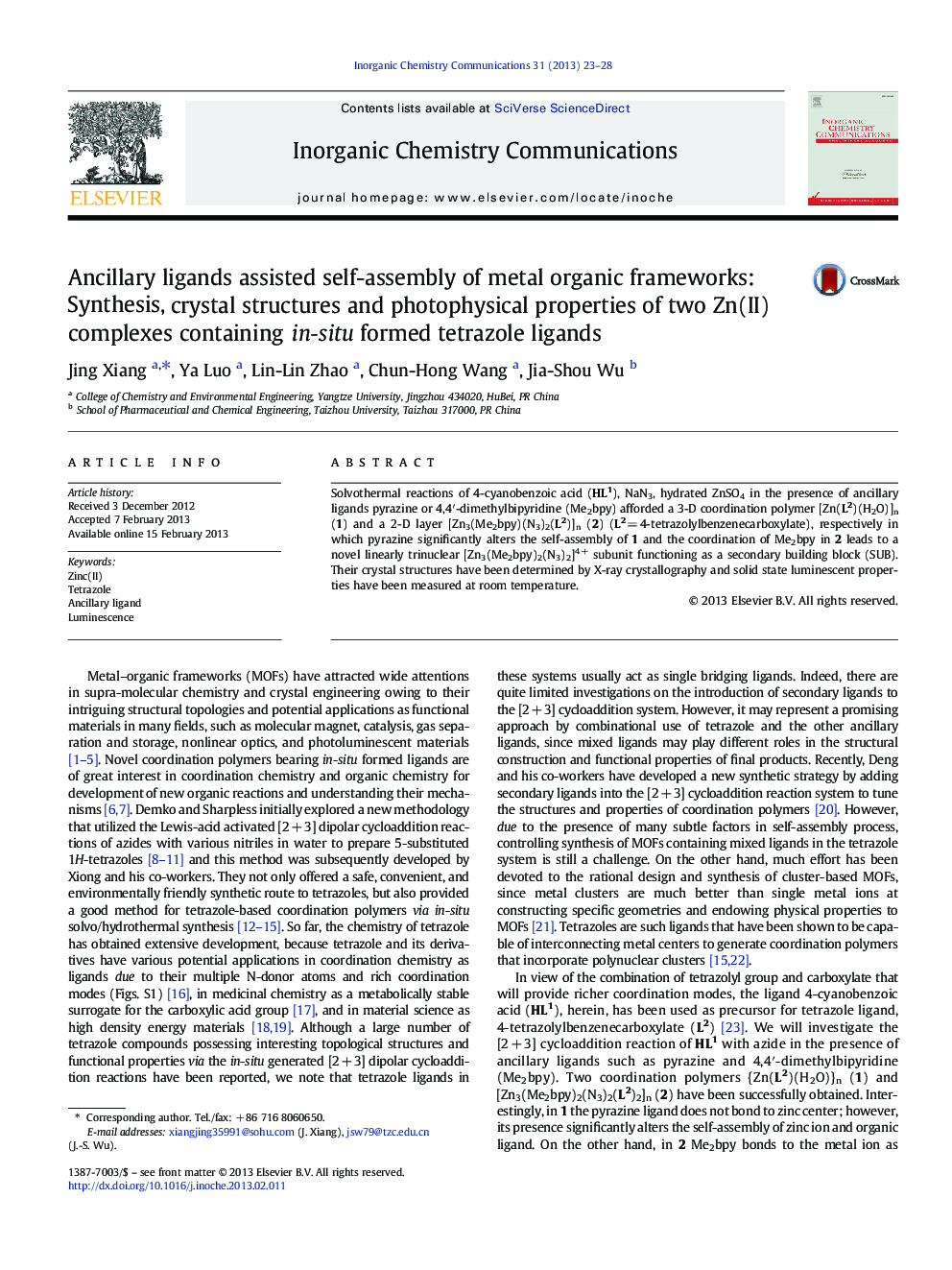| Article ID | Journal | Published Year | Pages | File Type |
|---|---|---|---|---|
| 1302128 | Inorganic Chemistry Communications | 2013 | 6 Pages |
Solvothermal reactions of 4-cyanobenzoic acid (HL1), NaN3, hydrated ZnSO4 in the presence of ancillary ligands pyrazine or 4,4′-dimethylbipyridine (Me2bpy) afforded a 3-D coordination polymer [Zn(L2)(H2O)]n (1) and a 2-D layer [Zn3(Me2bpy)(N3)2(L2)]n (2) (L2 = 4-tetrazolylbenzenecarboxylate), respectively in which pyrazine significantly alters the self-assembly of 1 and the coordination of Me2bpy in 2 leads to a novel linearly trinuclear [Zn3(Me2bpy)2(N3)2]4 + subunit functioning as a secondary building block (SUB). Their crystal structures have been determined by X-ray crystallography and solid state luminescent properties have been measured at room temperature.
Graphical abstractSolvothermal reactions of 4-cyanobenzoic acid (HL1), NaN3, hydrated ZnSO4 in the presence of pyrazine or 4,4-dimethylbipyridine (Me2bpy) afforded complexes [Zn(L2)(H2O)]n (1) and [Zn3(Me2bpy)(N3)2(L2)]n (2), respectively in which pyrazine alters the self-assembly of 1 and the coordination of Me2bpy in 2 leads to a linearly trinuclear [Zn3(Me2bpy)2(N3)2]4+ subunit as a SUB.Figure optionsDownload full-size imageDownload as PowerPoint slideHighlights► Pyrazine significantly alters the self-assembly of 1 ► The novel [Zn3(Me2bpy)2(N3)2]4+ cores functions as the SUBs in 2 ► A 44 grid topological architecture with grid length of 12.5 Å in 2 is generated ► The luminescence properties have been measured.
